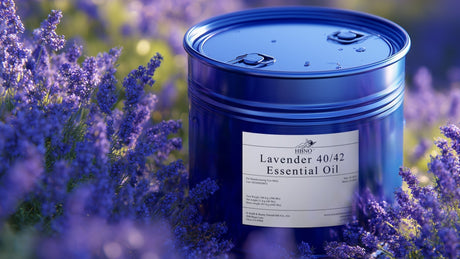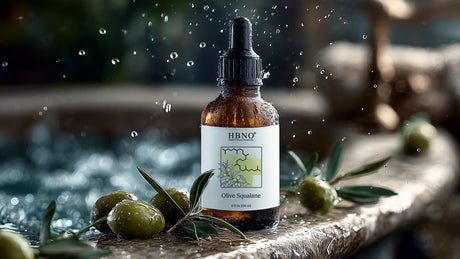As the weather warms and outdoor gatherings like picnics and barbecues become more frequent, one challenge often buzzes to the forefront: bees. While these essential pollinators play a crucial role in our ecosystem, their presence can sometimes be a nuisance or even a danger, especially for those with allergies or fears.
Fortunately, making your own essential oil bee repellent offers a natural, safe, and eco-friendly solution. In this blog, we'll explore the importance of bees, the benefits of avoiding synthetic repellents, and how to craft an effective DIY Repellent using the best essential oils.

DIY Essential Oil Recipe
Creating your own essential oil bee repellent is simple and requires just a few ingredients. Here's a step-by-step guide to making a safe, effective solution:
Ingredients
- 10 drops of peppermint essential oil
- 10 drops of citronella essential oil
- 5 drops of clove essential oil
- 5 drops of eucalyptus essential oil
- 2 cups of water
- 1 tablespoon of witch hazel (optional, for better mixing)
- A spray bottle
Instructions
- Combine all essential oils in a small bowl.
- Add the witch hazel to the spray bottle, followed by the essential oil blend.
- Pour in 2 cups of water and shake well to mix.
- Label your spray bottle and store it in a cool, dark place.
How to Use
- Shake the bottle before each use to ensure the oils are well-mixed.
- Spray the mixture around areas where you want to deter bees, such as outdoor seating areas, doorways, and windows.
- Reapply every few hours or after rain for optimal effectiveness.

Essential Oils: Nature's Powerful Repellents
Essential oils may be a fantastic natural solution for deterring bees. Their potent aromas can effectively mask the scents that attract bees, creating an environment where they feel unwelcome.
Below are some of the best essential oils to use in your bee repellent recipe:
1. Peppermint Oil
Humans love its refreshing aroma, but according to some studies bees dislike peppermint essential oil's strong scent. This oil is non-toxic and safe for use around children, pets, and plants. Additionally planting peppermint in your garden may enhance its repellent effects.
2. Citronella Oil
Often used to repel mosquitoes, citronella essential oil may be equally effective against bees. Its sour, citrus-like scent is a natural deterrent that can be used in candles, sprays, or incense.
3. Clove Oil
Extracted from the buds of the clove tree, clove bud essential oil has a strong, spicy aroma that bees find overwhelming. It's safe for plants and breaks down into environmentally friendly organic matter.
4. Eucalyptus Oil
Eucalyptus Globulus Essential Oil doubles as a bee repellent due to its sharp, menthol-like aroma. It's an excellent choice for both indoor and outdoor use.
5. Cinnamon Oil
According to research bees dislike the strong, warm scent of cinnamon leaf essential oil. You may also use ground cinnamon to enhance the repellent's effectiveness.

Enhancing Your Repellent's Effectiveness
While the recipe above forms the foundation of your bee-repelling efforts, you can amplify its impact by adopting additional strategies:
1. Strategic Application
Focus on areas where bees are most likely to linger, such as flowering plants, outdoor eating spaces, or near sweet beverages. By targeting these zones, you can reduce the likelihood of bees entering your personal space.
2. Combining Oils for Synergy
Experiment with different oil combinations to find the perfect balance of scents. For example, adding lavender oil can create a calming atmosphere while boosting the repellent's effectiveness.
3. Using Repellent Candles
Infuse your outdoor gatherings with repellent scented candles made using the same essential oils. These provide a dual benefit: ambiance and bee deterrence.
Additional Tips for Bee Prevention
While your DIY repellent can do much of the heavy lifting, combining it with other strategies can enhance its effectiveness:
1. Avoid Strong Scents
Bees are attracted to floral and fruity fragrances. Avoid wearing scented lotions or perfumes when spending time outdoors.
2. Remove Attractants
Keep food and drinks covered during outdoor gatherings. Clean up spills promptly to avoid attracting bees.
3. Plant Bee-Repelling Flora
Consider planting peppermint, marigolds, or citronella plants in your garden to naturally deter bees.
4. Seal Entry Points
Inspect your home for gaps or cracks where bees might enter. Seal these areas to prevent indoor infestations.
5. Decoy Strategies
Set up a bee-friendly water and nectar station away from your seating areas. This will give bees a designated space and reduce their interest in your activities.

Beyond Repellents: Supporting Bees Responsibly
While repellents play a crucial role in managing bee interactions, it's equally important to support these vital creatures. Here are some bee-friendly practices to consider:
1. Provide Safe Habitats
Plant native flowers and shrubs that offer nectar and pollen. Avoid using pesticides or herbicides that can harm bees and other pollinators.
2. Install Bee Hotels
Bee hotels provide shelter for solitary bee species, which are excellent pollinators and generally less aggressive than honeybees.
3. Educate Others
Spread awareness about the importance of bees and natural repellents. Encourage friends and family to adopt eco-friendly practices.
Creative Uses for Essential Oils
Essential oils aren't just for repellents-they offer versatility in many aspects of daily life. Below are some innovative ways to incorporate these oils:
1. Aromatherapy Diffusers
Fill your home with soothing scents like lavender Essential Oil or eucalyptus to create a calming environment while subtly repelling insects.
2. Cleaning Solutions
Add a few drops of essential oil to your household cleaning solutions for a natural, fragrant boost.
3. Culinary Applications
Some essential oils, such as food-grade peppermint or cinnamon, can add flavor to beverages and desserts. Always verify the oil's safety for consumption.
4. Personal Care Products
Incorporate essential oils into DIY skincare or haircare recipes. For example, eucalyptus oil can be used to create invigorating shampoos and conditioners
Final Thoughts
Bees are essential to the ecosystem, but you can keep them at bay without compromising comfort. A natural essential oil repellent, combined with bee-repelling plants and reduced attractants, ensures a buzz-free, enjoyable space.
So, gather your essential oils from a trusted supplier like HBNO bulk and give this DIY recipe a try. Not only will you keep the bees at bay, but you'll also be contributing to a healthier planet-one spray at a time.
Scale efficiently with a Private Label Bulk Solutions offering reliable sourcing and bulk production options.
Citations:



